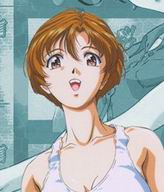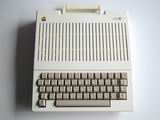
![]()
![]()
![]()
![]()
![]()
![]()
![]()
![]()
![]()
![]()
|
The Mac Geek's Journal - Archives Archived October 18, 2002
2003_11_10
|
| 10/18/2002 - Status on macgeek.org Hardware Move Things are looking great so far for macgeek.org. Just to re-cap on what's going on... macgeek.org is currently being hosted on hardware, hosted by Radiant Communications of Toronto, Canada. I highly recommend hosting via these people because they've provided excellent service over the past three years. Eugene Villaluz of Tapa Communications, my immediate contact, provides additional services on top of Radiant by helping me obtain additional services for macgeek.org, such as PHP and MySQL services. |
 |
| My needs are ever growing, and
it's quite a pain to be relying on other people for Internet hosting services.
It has come to the point where I need full control of macgeek.org so I can
basically do whatever I want with the site. Therefore, I'm currently building my
own hardware and software so I can host macgeek.org myself.
Right now, my test server is running on an Intel Celeron 800Mhz processor, 256MB RAM, hardware ATA RAID-1, RedHat Linux 8.0, Apache web server, MySQL, and PHP4. Everything's running smooth thus far, so today I could literally throw the switch. Eugene also owns his own T1 connection in Honolulu out of his Network Operations Center (NOC), so I'll be moving my hardware into his NOC very soon. On top of what the current macgeek.org site has, I'm also implementing a bulletin board system, developed by The phpBB Group. The bulletin board software is awesome! This piece of software will allow me to host forums. Topics in the forums I plan on hosting include Apple Computer collecting forum and a help forum. Because I'm running my own hardware and software, I'll have more flexibility developing other PHP/MySQL based services, including search capabilities and image hosting. Speaking of image hosting, having my own hardware will also allow me to have massive amounts of disk space, allowing me to host as much software and other items as I want. I'm planning on implementing the beta site within the next couple of weeks. Eugene is currently changing ISP's so I'll wait until the move is complete. |
|
10/12/2002 - CP/M Disk Images Found On-Line There
are quite a number of people out there in the world who are still using CP/M.
For you newbies, CP/M really started what ended up becoming MS-DOS or
PC-DOS. Many people give credit to Seattle-DOS for being the father of MS-DOS.
If this is the case, CP/M is the grandfather of MS-DOS. CP/M was developed in the 1970's, and utilized a somewhat cheap microprocessor called the Z80. Much of the instructions in the Z80 are very similar to the Intel 80xx family, so porting CP/M to the IBM PC was quite easy (the x86 version was known as CP/M-86). And many of the characteristics of CP/M were stolen by MS-DOS, such as the use of the *.COM program extension, and the dreaded "A>" prompt. One note to make about Apple's ProDOS... ProDOS had an advantage over CP/M and MS-DOS in that you could traverse from volume to volume without specifying a drive letter. By using this feature, you could stick a disk with a certain volume name into just about any disk drive on your system, and ProDOS will find it. Other computers used CP/M as well. My very first experience with CP/M was in 1982 when Billy Gomban (KH6JPL) introduced my dad and I to the Osbourne 1 computer. It ran a version of CP/M, and it was much more flexible than Apple Computer's DOS 3.3 I was currently using at the time. Other computers I personally used that ran CP/M include the Kaypro II and the Basis 108, both models I was able to get hands-on experience with at Computer Market in the early 1980's. The Apple II was able to use CP/M through various Z80 CPU cards. The most popular cards made for the Apple II included the Microsoft SoftCard, which unless I can be proven wrong was the first hardware product Microsoft made. This card, today, is still very sought after among Apple II collectors and users alike. Another popular card was PCPI's Appli-Card. Just through observation alone, I believe this was the most commonly used card of all the Z80 cards, and that's because just about every Apple II collection I've ever rubbled through, I've found at least two of these cards. I also believe this card was the fastest among the cards, and it also had its own memory, independent of the memory on the Apple II logic board and RAM/Language Card. Just recently, The Unofficial CP/M Web Site released CP/M 3 binaries for the Apple II. They've posted them on their web site, and it's free for the downloading. They also have versions of CP/M for many other models of computers. Other Updates... I've finally fixed both the home page and the journal page. I didn't realize that the tables were messed up big-time on browsers other than Internet Explorer. These two pages should now be more browser-friendly. I tell ya, working with complex table layouts can become very messy. |
|
10/01/2002 - Sakura Diaries
As a recommendation by several people, I just purchased
the collector's edition of Sakura Diaries. Like I've said
earlier, I'm a sucker when it comes to anime love stories. You'll never see anything like this story in western society. It involves three people... Urara (pictured right), is a cousin of Touma, and I believe they're about a year apart in age. Ever since she was a very young girl, she's had a crush on Touma (yeah, I know it's incest, but that's just the beginning, believe me...) The problem is that Touma doesn't even remember Urara, even though they both go to the same high school. One night, Urara paid a visit to Touma while he was staying at a hotel. The way she "acted" around him, Touma (and myself included) thought she was a teenage call girl. Being the virgin he is, he gets nervous, and therefore very rudely kicks her out of the room. |
 |
|
Touma just finished high school and
tried getting into Keio, supposedly a highly-rated college
much like one of the Ivy League schools in the U.S. Also
applying for Keio was Meiko, who's the same age as
Touma. Problem is, she got accepted but not Touma. Touma
has a huge crush on Meiko, and he so badly wanted to go to
Keio with her. So what does any insane moron do in this
situation? You lie about it!!!! He lied to Meiko about
getting accepted to Keio. Instead, he's forced to go to a
cram school in Tokyo. He, however, does this without Meiko
knowing about it. Touma made arrangements to stay at his uncle's home in Tokyo while he goes to cram school. However, when he arrived at the house, he received a big surprised... It ends up that Urara lives in the same house! A very big surprise for Touma. Unknown to Touma, Urara actually knows that he BS'd about being accepted to Keio (his mom spilled the beans about it). She has very strange methods of "cheering" Touma up. On the first day, she walks around the kitchen literally wearing just an apron. Touma thinks Urara is so kawai!!! :P That's all I'm going to say about the series! I've only watched the first three parts (it's a 12-part series). I personally don't like the three main characters, especially after watching Video Girl Ai. But the humor and the storyline behind it is what's making me want to watch the rest of the series. |
 The Apple Laser IIc, manufactured by Milmar (circa 1985). Click on the photo to see a much larger image |
09/28/2002 - Very unusual Apple IIc clone has been discovered Of all the years I've been involved with Apple II computers, I've never seen this particular clone before. It's called the Apple Laser IIc, manufactured by Milmar of Brazil. Looking at the unit, it features the same case design as the real Apple IIc. However, the keys are much more like an Apple IIe keyboard, which to me would be easier to type with than the flat keys of an original IIc. Though this particular clone uses the "Apple" name, it is definitely not made by Apple Computer, Inc. Through my research, this model sports a 65C02 microprocessor, 16KB of ROM, 64KB of RAM, PAL video, and is compatible with DOS 3.3, ProDOS, and even CP/M. Seeing they mention CP/M, it may actually include a Z80 microprocessor as a stock item. The Apple logo you see in the photo did not come standard, according to the brochures I've found on the web. A picture of the bottom of the unit can be seen here. That's pretty much all I know! Most of the web sites that I looked at are written in Spanish (I speak only English, Hawaiian, and a teensy bit of Japanese). |
| If you look very closely at the keyboard, it's structured more like an Apple II+ keyboard. It lacks the two Apple keys, but at least it has a caps lock key. Brazil was one of many countries who tried entering the computer industry in the 1980's. They couldn't, however, make their own original designs, so they ended up just cloning many of the popular computers of its time, including the Apple II and even Macintosh line. According to Michael Mahon of comp.sys.apple2, "This [computer] was supposed to stimulate the creation of Brazilian computer companies." However, they completely missed the point of "network effect" of having a few standards to leverage software investment. |
| 09/24/2002 - New Macintosh downloads for PC people I have posted two new disk images to prolong the life of the legacy Apple Macintosh systems. The two disk images are for Apple Macintosh System 6.0.8. If you've come across a legacy Macintosh in need of system software, download both the System Additions and System Startup diskettes. |
 |
|
2003_11_10 |